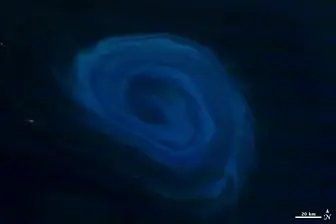
Afkarnews -This type of geoengineering - large - scale manipulation of the climate - has been controversial, but this is the first experiment to show that the technique works. At the end of the ۲۰۰۴ summer season, scientists fertilized an ocean eddy in the Southern Ocean off Antarctica with ۷ tons of dissolved iron, prompting the growth of small plant - like organisms called phytoplankton, Isciencetimes reported.
The plankton bloom was chiefly made up of diatoms, algae which can carry heat - trapping carbon to the bottom of the ocean floor when they die, reports The Christian Science Monitor. At least half of the heat - trapping carbon in the resulting bloom of diatoms sank below ۳,۳۰۰ ft.
" Iron - fertilised diatom blooms may sequester carbon for timescales of centuries in ocean bottom water and for longer in the sediments, " the researchers wrote in a study published in the journal Nature.
The study was the first convincing evidence that carbon, absorbed by algae, can sink to the ocean bed. If this organic matter settles into the deep ocean, it may not reach the surface for centuries or millennia, depending on ocean circulation, lead researcher Victor Smetacek said, according to CBS News.
One doubt about ocean fertilization has been whether the carbon stays in the upper ocean layers, where it can mix back into the air, reports Reuters. A build - up of carbon dioxide in the atmosphere is the culprit for higher global temperatures.
The team estimated that for every iron atom they introduced into the eddy, at least ۱۳,۰۰۰ carbon atoms were taken up into the biomass of the algae, becoming available for export into deeper water, reports CBS News.
But that doesn ' t mean this process is the solution to global warming. It ' s a controversial technique because there are concerns about the effects on marine life or the possibilities of spurring a toxic algae bloom as opposed to a benign one.
The study authors remain cautious about their findings, which is why they spent several years thoroughly evaluating their data before publishing the work.
The data suggest iron fertilization could trap only about ۱۰ percent of current carbon dioxide emissions " under very, very optimistic assumptions, " study co - author Dieter Wolf - Gladrow of the Wegener Institute told National Geographic News.
Iron seeding, he added, "cannot provide a solution for our CO2 problem."
















